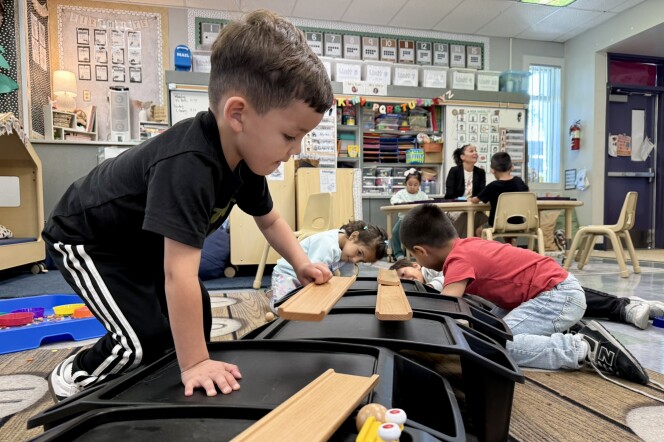With our free press under threat and federal funding for public media gone, your support matters more than ever. Help keep the LAist newsroom strong, become a monthly member or increase your support today.
New Apartment Buildings Take Four Years To Finish In LA, Study Says

If you’re a developer wanting to build new housing in the city of Los Angeles, get ready to wait.
A study published Thursday by the Los Angeles Business Council Institute finds that in recent years, new L.A. apartment buildings are taking almost four years to complete on average.
Researchers from UCLA and Cal State Northridge found the city would need to increase the pace of construction more than five-fold to reach a state-mandated goal of almost 457,000 new homes by 2029, based on current approval and construction timelines.
CSUN economics professor Edward Kung , a co-author of the study, said when they looked at apartment buildings developed between 2010 and 2022, they saw that projects were significantly slowed down by needing to go before the city’s Planning Commission.
“On average, that would add about half a year to the approval process,” Kung said. “On the other hand, projects that met all the existing zoning requirements and didn’t need entitlements took about six months faster to be approved.”
If these approval windows were shortened, the researchers estimate the city would have almost 16,000 more housing units today, with 2,340 of those units covered by affordability restrictions.
Another bottleneck came from L.A.’s Department of Water and Power. Underground electrical hookups for new buildings took more than eight months on average, according to the study.
The report recommends speeding up new housing by expanding Mayor Karen Bass’s fast-tracking efforts for affordable projects to market rate and mixed-income buildings.
Developers said the report confirms what they’ve long told city leaders: L.A.’s slow and convoluted approach to development is scaring away investors who want to build new housing.
“I work with so many investors who have just effectively exited the market entirely for development in the city of L.A. because the process is opaque,” said Jennifer McElyea, a managing partner with Ethos Real Estate.
City Council President Paul Krekorian and Housing Committee Chair Nithya Raman said they plan to channel the report’s findings into policy changes.
“We don't control the price of land. We can't control how the private sector invests in our city. But we can make it much easier,” Raman said. “We can make sure that the rules of the game are clear for developers who want to operate here... These are going to be my priorities.”
By some estimates, L.A. County needs half a million new affordable housing units to keep up with demand. Almost 60% of renters in the city of L.A. are paying more than 30% of their income on rent, and about one-third are spending more than half.
City councilmembers recently passed new community plans in Hollywood and Downtown L.A. that aim to produce 135,000 new homes over the next two decades. But some property owners feel the city is still placing too many restrictions on new housing in areas such as the Fashion District, where garment workers fear being displaced by high-end housing development.











